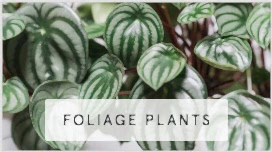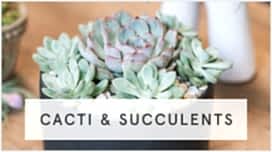Flowers on Mother's Day says, "I love you" without a word, but depending on the blooms you choose, they can mean a lot more.
We know Mother's Day is the perfect time to spring for Mom's favorite blossoms. Does she adore irises? Swoon over sunflowers? Get giddy for gladiolus? Sigh dreamily over daylilies? While picking her favorites is easy, flowers also can carry a deeper message, a symbolism that hearkens back to the Victorian era, when a suitor might want to deliver dialogue he couldn't say aloud.
Irises represent trust, faith, wisdom, hope, and valor—all attributes a super mom no doubt contains. Sunflowers mean adoration, especially in a deep red, while nothing says joy and happiness quite like a bunch of yellow ones.
Convey the strength and integrity of Roman gladiators through the gloriously colorful gladiolus; a loving mom is nothing if not strong and hopeful. As for daylilies, these plants native to China are a blessing for the health of mothers and a symbol in that country of a child's love for their mom.
Ready to give Mom more than good wishes for Mother's Day? Let's dive into the meaning behind some of the most popular Mother's Day flowers.
Carnations
Consider carnations, the flower that started the tradition of Mother's Day flowers. In 1907, in honor of her late mother, Anna Jarvis promoted a service commemorating mothers at her church in Grafton, West Virginia, gifting all the mothers in attendance with a carnation—her mother's favorite flower.
Today, ruffly carnations are still a symbol of motherly love—pink ones, especially. Pink carnations also show gratitude, appreciation, and remembrance, making them a sweet way to tell Mom thank you. If she's not fond of pink, try light red for admiration and friendship, or white, symbolizing good luck and pure love.
Carnations are hardy, even as cut flowers, so as a bonus, whichever color you choose will bring Mom cheer throughout the week.
Daffodils
Know a new mom? Gift her with daffodils, which floral experts say symbolize new beginnings. This spring bloom is also synonymous with celebrations because it signifies hard work and enthusiasm.
The daffodil's sunshine-yellow color is certainly cheery, and if you choose a potted daffodil instead of cut flowers, she can plant it and enjoy it year after year. (These sturdy perennials are even deer- and rodent-proof!)
Tulips
In floriography, tulips have as many meanings as their colors. Purple, for instance, symbolizes royalty, making them ideal for a mom you want to treat like a queen. Orange tulips mean appreciation, pink stands for affection, white epitomizes grace, pink shows good wishes, and yellow tulips mean "sunshine in your smile"—all warm messages for a radiant and fragrant bouquet.
Plus, this quintessential spring flower has lots of playful varieties to match any mom's personality. Look for lily-fringed, parrot, fringed, or French for a floral gift that's as unique as she is.
Peonies
The lush, elegant peony is another flower fit for a queen—they're often called the "queen of flowers" in their native China, floral experts say. Their ornate blooms also have a variety of meanings. While peonies can epitomize romance and a happy marriage, making them a great choice for brides, they also signify honor, prosperity, and a happy life, all things Mom would appreciate.
A cluster of peonies looks divine in white, pink, yellow, red, or even purple. Yet for such a showy flower, they have a sweet, almost-delicate scent that's not overpowering.
Gardenias
White gardenias have a message dating back to Victorian times for friends and family alike: "You're lovely." No wonder these beauties never go out of style. Their shiny leaves also represent enlightenment, self-reflection, and clarity.
A live gardenia has a pleasant yet powerful fragrance, and once planted, these perennials bloom once the warm weather returns—a lovely way to remind Mom you're thinking of her.
Chrysanthemums
With the word mum right in their name, chrysanthemums are another go-to Mother's Day flower. Show Mom your appreciation with pink ones, express loyalty with white ones, and give her loads of affection and love with pops of red.
Hydrangeas
Another spring favorite, hydrangeas, are frequent Mother's Day flowers because they represent gratitude. Specifically, in Victorian days, a dramatic bouquet of hydrangeas meant, "Thank you for understanding," floral experts say.
As with other flowers, the colors shade the meaning. Purple hydrangeas add a wish for abundance to that gratitude and understanding, while pink ones stand for love and sincerity.
Orchids
A mom with flair would appreciate an orchid, a fairly easy houseplant that has an exotic style. Pink ones stand for poise, elegance, femininity, love, and appreciation, while cymbidium orchids represent prosperity and health. Show Mom your love is sincere with a stunning white or blue orchid, or tell her she's royalty with a sophisticated purple orchid.
Gerberas
Smaller than sunflowers but with similar peppy stalks of personality, cheerful gerberas come in a rainbow of choices for Mother's Day, guaranteed to make her smile. Express your gratitude with pink ones, signify enthusiasm and warmth with orange ones, and say it's time to celebrate with yellow.
Roses
Last but not least, let's look at the rose. Roses are popular year-round because red ones mean romance, passion, and love. The Victorians could say, "I love you" with a single red rose or really telegraph their ardor with a dozen.
Roses also are a beautiful and traditional choice for Mother's Day. Pink ones signify happiness, as well as gratitude, femininity, and strength. White roses symbolize purity and innocence, while cream or peach ones stand for thoughtfulness.
Yellow can be a tricky floral color, symbolizing jealousy in some cultures, but some floral experts say that yellow roses are a tender way to let someone know you're thinking of them. They epitomize joy, happiness, and friendship.
See Mom's Smile Light Up
Whatever blooms you choose, Mother's Day flowers pack lots of heartwarming attributes in one vibrant package. Help them look fresh longer by absorbing water better. We recommend cutting fresh stems with a sharp knife or scissors at an angle, about one to two inches from the bottom, before placing them in a vase. Then watch Mom's happiness blossom.













